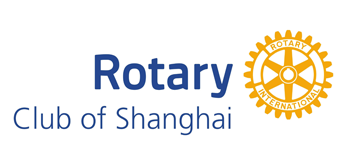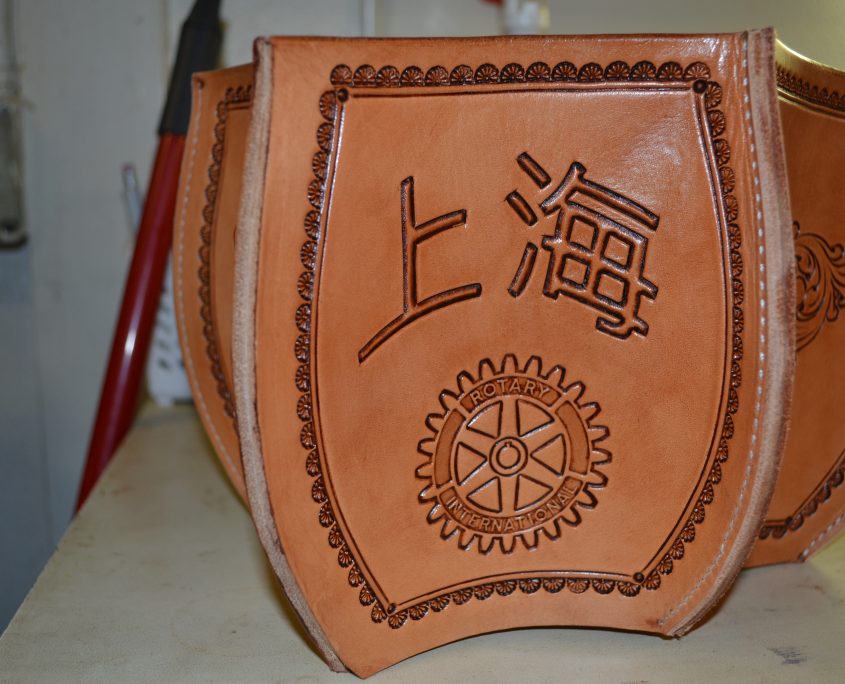Rotary Club of Shanghai
The Rotary Club of Shanghai (RCS) boasts a rich and intricate history, being the first Rotary club established in China in 1919. Almost 20 years ago, on 8th February 2006, through the initiative from expatriate Rotarians who had been gathering consistently since 1997, the club re-entered the Rotary community as club #60725.
Currently, the club boasts a dynamic, growing membership of over 50 individuals who are dedicated to fostering community support through various projects, advocating for robust business ethics, and upholding Rotary’s core principles. The members hail from a diverse array of industries and professions, collectively representing over 20 nationalities who nurture their fellowship on many occasions.
The Rotary Club of Shanghai actively champions and executes numerous initiatives within the greater Shanghai area and in more remote regions of China. These efforts are often in collaboration with international Rotary clubs. Additionally, the club occasionally lends its support to overseas projects. This wide-ranging engagement underscores the club’s commitment to both local and global community enhancement.
The club’s signature project is called “Gift of Life”, which has provided more than 780 life-saving operations to young children and teenagers whose families cannot afford the hospital costs.
RCS regular meetings are held every Tuesday from 6:30 pm to 8:30 pm at HUALUXE Shanghai Twelve At Hengshan Hotel.
Definition of Rotary
How do you describe the organization called “Rotary”? There are so many characteristics of a Rotary club as well as the activities of a million Rotarians. There are the features of service, internationality, fellowship, classifications of each vocation, development of goodwill and world understanding, the emphasis of high ethical standards, concern for other people and many more descriptive qualities.
In 1976 the Rotary International Board of Directors was interested in creating a concise definition of the fundamental aspects of Rotary. They turned to the three men who were then serving on Rotary’s Public Relations Commit- tee and requested that a one-sentence definition of Rotary be prepared. After numerous drafts, the committee presented this definition, which has been used ever since in various Rotary publications:
“Rotary is an organization of business and professional persons united worldwide who provide humanitarian service, encourage high ethical standards in all vocations and help build goodwill and peace in the world.”
Those 31 words are worth remembering when someone asks, “What is a Rotary club?”
Rotary’s Wheel Emblem
A wheel has been the symbol of Rotary since our earliest days. The first design was made by Chicago Rotarian Montague Bear, an engraver who drew a simple wagon wheel, with a few lines to show dust and motion. The wheel was said to illustrate “Civilization and Movement.” Most of the early clubs had some form of wagon wheel on their publications and letterheads. Finally, in 1922, it was decided that all Rotary clubs should adopt a single design as the exclusive emblem of Rotarians. Thus, in 1923, the present gear wheel, with 24 cogs and six spokes was adopted by the “Rotary International Association.” A group of engineers advised that the geared wheel was mechanically unsound and would not work without a “keyway” in the center of the gear to attach it to a power shaft. So, in 1923 the keyway was added and the design which we now know was formally adopted as the official Rotary International emblem.
Object of Rotary
In some areas of the world weekly Rotary club meetings begin with all members standing and reciting the Object of Rotary. This statement, which comes from the Constitution of Rotary, is frequently seen on a wall plaque in Rotarians’ offices or place of business. The Object of Rotary is “to encourage and foster the ideal of service as a basis of worthy enterprise.” The statement then lists four areas by which this “ideal of service” is fostered: through the development of acquaintance as the opportunity for service; the promotion of high ethical standards in business and professions; through service in one’s personal, business and community life; and the advancement of international understanding, goodwill and peace.
The Object of Rotary has not always been expressed in this manner. The original Constitution of 1906 had three objects: promotion of business interests, promotion of good fellowship and the advancement of the best interests of the community. By 1910 Rotary had five Objects as increased emphasis was given to expanding Rotary. By 1915 there were six Objects. In 1918 the Objects were rewritten again and reduced to four. Four years later they had again grown to six and were revised again in 1927.
Finally, at the 1935 Mexico City Convention the six Objects were restated and reduced to four. The last major change came in 1951, when the “Objects” were streamlined and changed to a single “Object” which is manifested in four separate ways. The “ideal of service” is the key phrase in the Object of Rotary. This ideal is an attitude of being a thoughtful and helpful person in all of one’s endeavors. That’s what the Object truly means.
Rotary Mottoes
The first motto of Rotary International, “He Profits Most Who Serves Best,” was approved at the second Rotary Convention, held in Port- land, Oregon, in August 1911. The phrase was first stated by a Chicago Rotarian, Art Sheldon, who made a speech in 1910, which included the remark, “He profits most who serves his fellows best.” At about the same time, Ben Collins, president of the Rotary Club of Minneapolis, Minnesota, commented that the proper way to organize a Rotary club was through the principle his club had adopted–“Service, Not Self.” These two slogans, slightly modified, were formally approved to be the official mottoes of Rotary at the 1950 Convention in Detroit–“He Profits Most Who Serves Best” and “Service Above Self.” The 1989 Council on Legislation established “Service Above Self” as the principal motto of Rotary, since it best explains the philosophy of unselfish volunteer service.
The 4-Way Test
One of the most widely printed and quoted statements of business ethics in the world is the Rotary “4-Way Test.” It was created by Rotarian Herbert J. Taylor in 1932 when he was asked to take charge of the Chicago- based Club Aluminum Company, which was facing bankruptcy. Taylor looked for a way to save the struggling company mired in depression-caused financial difficulties. He drew up a 24-word code of ethics for all employees to follow in their business and professional lives. The 4-Way Test became the guide for sales, production, advertising and all relations with dealers and customers, and the survival of the company was credited to this simple philosophy. Herb Taylor became president of Rotary International during 1954-55. The 4-Way Test was adopted by Rotary in 1943 and has been translated into more than 100 languages and published in thousands of ways. The message should be known and followed by all Rotarians.
“Of the things we think, say or do: 1. Is it the TRUTH? 2. Is it FAIR to all concerned? 3. Will it build GOODWILL and BETTER FRIENDSHIPS? 4. Will it be BENEFICIAL to all concerned?”
Tolerance of Differences
Occasionally there is a temptation to criticize the laws, customs and traditions of another country which may seem strange or contrary to our own. In some instances illegal practices or customs of one nation are completely lawful and acceptable in another. As members of an international organization dedicated to world understanding and peace, it behooves Rotarians to exercise restraint in judging our Rotary friends and citizens from other countries when their behavior seems unusual to us. A Rotary policy has existed for more than half a century relating to this dilemma of international relationships. The statement, adopted in 1933, says that because it is recognized that some activities and local customs may be legal and customary in some countries and not in others, Rotarians should be guided by this admonition of tolerance:
“Rotarians in all countries should recognize these facts and there should be a thoughtful avoidance of criticism of the laws and customs of one country by the Rotarians of another country.”
The policy also cautions against “any effort on the part of Rotarians of one country to interfere with the laws or customs of another country.” As we strive to strengthen the bonds of understanding, goodwill and friendship, these policies still provide good advice and guidance.
The Saddle Story
We, at RCS, are looking to build stability and continuity with our traditions and how we carry them out. This is a story about a new tradition.
Some Rotary Firsts
- The first Rotary club meeting was in Chicago, Illinois, on February 23,1905.
- The first regular luncheon meetings were in Oakland, California, chartered in 1909.
- The first Rotary convention was in Chicago in 1910.
- The first Rotary club outside of the United States was chartered in Winnipeg, Manitoba, Canada, in 1910.
- The first Rotary club outside of North America was chartered in Dublin, Ireland, in 1911.
- The first Rotary club in a non-English-speaking country was in Havana, Cuba, in 1916.
- The first Rotary club in South America was chartered in Montevideo, Uruguay, in 1918.
- The first Rotary club in Asia was chartered in Manila, Philippines, in 1919.
- The first Rotary club in Africa was chartered in Johannesburg, South Africa, in 1921.
- The first Rotary club in Australia was chartered in Melbourne in 1921. (original idea from “Scandal Sheet”)
- Rotary became bilingual in 1916 when the first club was organized in a non-English- -speaking country–Havana, Cuba.
- Rotary established the “Endowment Fund” in 1917, which became the forerunner of The Rotary Foundation.
- Rotary first adopted the name “Rotary International” in 1922 when the name was changed from the International Association of Rotary Clubs.
- Rotary first established the Paul Harris Fellows recognition in 1957 for contributors of $1,000 to The Rotary Foundation.
- The Rotary club which first held meetings on a weekly basis was Oakland, California, the Number 3 club.
- The Rotary emblem was printed on a commemorative stamp for the first time in 1931 at the time of the Vienna Convention.
- The first Rotary club banner (from the Houston Space Center) to orbit the moon was carried by astronaut Frank Borman, a member of that club.
- The first Rotary International convention held outside the United States was in Edinburgh, Scotland, in 1921.
- The first head of state to address a Rotary convention was U.S. President Warren G. Harding in 1923 at St. Louis.








